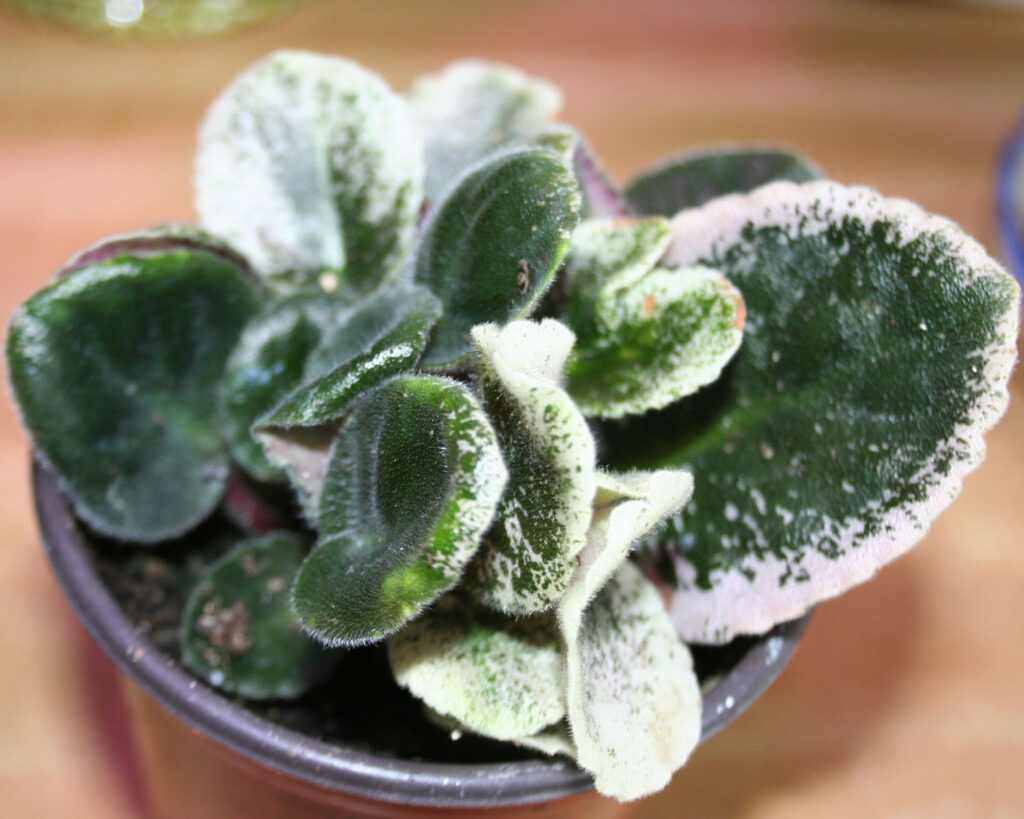
Originally discovered growing wild in Tanzania over 110 years ago by a German officer with an interest in botany, the African Violet has become one of the most popular houseplants in the world. The simplicity of care and the plant’s ability to provide beautiful blooms year round is a major factor in their popularity. They like moderate temperatures, about 12 hours of indirect light (I recommend LEDs of course), and a small amount of fertilizer and water. As with all house plants, the number one cause of death is over watering, so the most important thing is to establish a watering schedule that will not drown the delicate root system. Below you will find some tips to help your African Violets stay vibrant and full of blooms.
Our first method of restoring a fading African Violet is a leaf cutting. Be sure that pots and tools are free from soil borne diseases and bacteria by washing them well in hot soapy water. Fill small, (3”) pots with a light soilless seed starting soil. A popular mix is 1 part peat moss, 1 part horticultural vermiculite, and 1 part perlite. Find a medium sized leaf and slice the stem at an angle leaving about an inch from the base of the leaf. Make a small hole in the soil and insert the sliced stem leaving about ½ inch of the stem above the soil. Water so that the soilless medium is moist but not soggy. You may have to push down the stem lightly to keep it underground after watering. Now place a small sandwich bag loosely over the pot so it is covering the entire leaf and the top of the pot. Small leaves will begin to show in 6-8 weeks. You will want to lightly fertilize by adding a small amount of fertilizer to the water when the first small leaves appear. After approximately 10 weeks, gently remove the African Violets from the pot and look closely to see each start and separate them. Discard the initial starter leaf, then take each of the new plants and repeat the process above for an invigorated supply of your favorite African Violet.
Our second tip is for restoring an old violet with “gooseneck” (plants that have lost their bottom leaves and now have elongated stems). Pull off the outer leaves until you are down to a small inner rosette. Make sure all of the flowering stems are removed. Next, gently pack the light, soilless medium into a clean 3“ pot. Now, cut the thick stem at an angle about ½ inch below the rosette. Bury this stem up to the base of the plant in the soilless mix and cover with a plastic bag after dampening the soil.
While both of these methods are an easy way to propagate fresh African Violets, there are circumstances where you will likely want to dispose of the plant as opposed to working off of cuttings. Cyclamen mites will cause distorted leaves and flowers while weakening the root system and making the plant unable to take in water. If your plants are affected you can take a leaf cutting and soak it overnight in water to try another violet but you will want to throw away the mother plant and keep the cutting separate from the rest of your plants as a precaution. Another common problem that may affect your African Violets is the condition caused by a fungus called Cylindrocarpon. The fungus thrives when the soil is wet and soggy. This is known as Root Rot, and can be identified by areas of the root zone turning soft and mushy. Root rot will cause an otherwise healthy-looking plant to topple over at the base. Barring these conditions- following the proceeding tips can provide you with beautiful blooms and years of enjoyment from any African Violet.
Angela Lundmark is an indoor gardener and freelance writer. The information in this article was provided by Sue Lundmark, also known as “mom”. She has been growing African Violets for over 25 years.
Related Articles
Growing Healthy, Productive and Profitable Plants through Succession Planting





Comment here